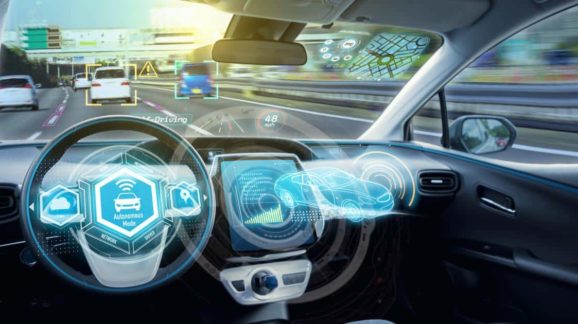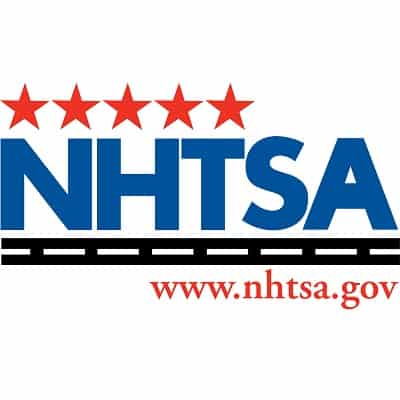Automated Vehicles 3.0 Guidance Continues Green-Lighting Innovation

 Last week, the U.S. Department of Transportation (DOT) released the third iteration of its guidance for automated vehicles, Preparing for the Future of Transportation: Automated Vehicles 3.0 (AV 3.0). Notably, this guidance is the product of a department-wide effort that covers all surface transportation modes, including the interface of maritime infrastructure and trucks at intermodal port facilities.
Last week, the U.S. Department of Transportation (DOT) released the third iteration of its guidance for automated vehicles, Preparing for the Future of Transportation: Automated Vehicles 3.0 (AV 3.0). Notably, this guidance is the product of a department-wide effort that covers all surface transportation modes, including the interface of maritime infrastructure and trucks at intermodal port facilities.
Previous iterations were solely focused on passenger cars regulated by the National Highway Traffic Safety Administration (NHTSA). In addition to NHTSA, AV 3.0 brings in the needed expertise of the Federal Highway Administration (FHWA), Federal Motor Carrier Safety Administration (FMCSA), Federal Transit Administration (FTA), Federal Railroad Administration (FRA), Maritime Administration (MARAD), and Pipeline and Hazardous Materials Safety Administration (PHMSA). Only through multi-modal cooperation at DOT can we expect to realize many of the promising potential benefits of automated vehicles, from safety and accessibility to efficiency and economic growth.
Earlier this year, several DOT modal agencies requested comments or information regarding barriers to deploying automated vehicles. CEI submitted comments to NHTSA, FMCSA, FHWA, and FRA.
- To NHTSA, we stressed the need to modernize Federal Motor Vehicle Safety Standards (FMVSS) and to improve FMVSS conformity with future voluntary consensus standards (VCSs).
- To FMCSA, we stressed the need to reform truck and bus regulations in a performance-based direction, to adopt “operator neutrality” in drafting new regulations so that they do not unnecessarily discriminate between human drivers and computer “drivers,” and VCS conformity.
- To FHWA, we stressed that a bedrock principle for infrastructure support for automated vehicles should be technology neutrality, which has been threatened by past actions to mandate specific vehicle-to-vehicle communications protocols over arguably superior alternatives.
- To FRA, we urged the agency to withdraw its deeply flawed proposed rule that would require two-person minimum crew sizes on trains, undermining the business case for future automated train operations.
Our recommendations to NHTSA, FMCSA, and FHWA were all met by AV 3.0. Unfortunately, the discussion to FRA was largely limited to the interaction of automated road vehicles at railroad grade crossings. To be sure, this is an important safety issue that needs to be addressed, but given that a regulatory proposal to kneecap automated trains before they even exist still has not been withdrawn, DOT should have at least discussed this problem.
The Federal Register entry requesting comments on AV 3.0 is here. You can submit comments here, which are due on Monday, December 3 (although as this is not a rulemaking, this is not a hard deadline).
Other Highlights of AV 3.0
- Appendix C lists current AV-related voluntary consensus standards and ongoing standards-developing efforts underway. For more on the problem of incorporating modern technical standards into auto safety regulations, see my January 2018 report, “Modernizing Federal Motor Vehicle Safety Standards.”
- In the fiscal year 2018 appropriations omnibus, Congress provided up to $1.5 million to study the workforce impacts of automated vehicle technologies. The study will be led by the Department of Transportation, and will be conducted in consultation with the Departments of Labor, Commerce, and Health and Human Services. A Federal Register notice seeking comments on the scope of the study is here. You can submit comments here.
- FHWA plans to update its Manual on Uniform Traffic Control Devices (MUTCD). The MUTCD covers the panoply of “signs, signals, markings and other devices used to regulate or guide traffic on street, highway, and other facilities.” Last updated in 2009, a modernized MUTCD will be especially important to promoting a standardized “language” most amenable to computer vision systems and human road users while being cost-conscious, recognizing that communities across the country will not be able to instantaneously replace every traffic control device.
- DOT will no longer recognize the ten AV proving grounds it designated in January 2017. This is good news. First, the core challenge of future on-road testing is expanding operational design domains across varying geographies, weather conditions, etc. A handful of narrow proving grounds do not serve this purpose particularly well. Second, tying money to a particular set of proving grounds creates an incentive of those proving ground administrators to perpetually lobby for more funding. This is a recipe for political graft and grift, not promotion of technology.
- NHTSA plans to begin a rulemaking on modernizing FMVSS to allow the self-certification of vehicles that do not rely on human driver input.
- NHTSA plans to begin a rulemaking on streamlining the FMVSS temporary exemption requirements. However, given the statutory constraints of temporary exemptions, real change would need to come from Congress.
- NHTSA will soon publish an Advance Notice of Proposed Rulemaking on how to structure a collaborative research pilot program on highly and fully automated vehicles. The pre-publication draft is here.
AV 3.0 is another positive step forward on developing the appropriate federal regulatory framework for AVs. While there are a number of actions DOT’s modal agencies can take without additional congressional authorization, fundamental reform by Congress is needed. This is why CEI continues to call for the passage of the bipartisan AV START Act. To best promote an environment conducive to AV testing and deployment, Congress and regulators must work together to chart this course.